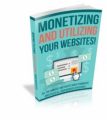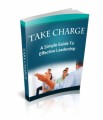Salespage Snapshot

Table of Contents
Introduction 6
Chapter 1: The Emotional Body … 9
Chapter 2: Research on Emotions … 16
Facts About Emotions ….. 17
Emotions Versus Feelings …. 18
Chapter 3: Your Mind and Its Impact on Your Emotions … 21
Chapter 4: Embracing Your Emotions Through Awareness … 24
Avoiding .. 26
Reacting .. 27
Resisting . 27
Chapter 5: Behaviors That Influence Your Emotions … 31
Chapter 6: Managing Your Emotions Through Breathing . 34
Chapter 7: Techniques to Feel at Peace When Your Life Is Chaotic .. 37
Chapter 8: Developing Emotional Intelligence .. 42
Stop Judging . 42
Identify Your Strengths and Weaknesses ….. 43
Be Assertive .. 43
Express Your Emotions … 43
Chapter 9: Achieving a Deeper Understanding of Your Emotions ….. 46
Rejection . 48
Abandonment 48
Humiliation …. 49
Injustice … 49
Betrayal … 50
Chapter 10: Redesigning Your Life to Eliminate Anxiety … 56
Get Moving …. 56
Enjoy a Good Night’s Sleep .. 56
Meditate .. 57
Surrender 57
Have Fun . 58
Socialize .. 58
Keep a Journal …. 58
Conclusion ….. 61
Sample Content Preview
Between 30 and 45 points:
You often block your desires with your limiting beliefs. These desires are taking too much importance in your life. This makes you experience anxiety, frustration, disappointment, and many other emotions caused by unmet expectations. By not allowing yourself to manifest your desires, you want others to fulfill them for you. In this book, you will acquire a better understanding of how you can shift your mind not to believe all the limits you place on yourself and also better manage emotions.
Between 45 and 60 points:
you are in the right direction. You feed your emotional body quite well, but you lack confidence in yourself and the world around you. You do not believe enough that you have the right to desire what you want and that you have everything you need to manifest it. Sometimes you doubt it. Your head sometimes takes over your intuition and your feeling, which leads you to worry about the future. This book will enable this ability to trust more in your abilities to create the reality that you want and be more at peace with the world around you.
Between 60 and 75 points:
You feed your emotional body very well. You allow yourself to have desires, and you realize them very easily. To create your life, you use your emotional energy well, which is very magnetic. You are a person more sensitive than emotional. This book will still provide you with a deeper understanding of what you do right but also how you can help others be empowered to manage their emotions.
The emotional body was created to feel, to be sensitive to what is happening in our material world. This role is for the sole purpose of helping us grow and recognize our strength and power that lies within. In the next chapter, we will explore the research that was done on emotions and what that means to you.
CHAPTER 2: RESEARCH ON EMOTIONS
Emotions have been a subject of research since the beginning of the 20th century. Although it’s not a new subject, it was well documented by the stoicism philosophy, which dates back to the 3rd century.
In stoicism philosophy, it was believed that one needs to learn what is in one’s control to change and what isn’t. Some events may not be in our control, but what is in our control is our reaction to those events. It wasn’t necessarily specifically about mastering emotional states, but it was part of the practice.
Today, Stoicism is a practice that is becoming more and more popular; the goal is to develop the ability not to let events trigger some emotional disturbance. In another way, it’s about not allowing adverse events or drama to affect us and regulate our emotions. It will enable many of us to operate in a very stressful situation while remaining calm, composed, and undisturbed by the chaos around us. Stoicism is not about ignoring or blocking emotions but more about learning to tame them and not let emotions take over your life. When someone can reach a certain level of Stoicism, he or she can be less reactive and make a better decision.
Based on research, emotions live on a spectrum or a continuum that, on the one hand, is fear and on the other is love. Between love and fear, we experience a variety of emotions, which is like a gradient and not necessarily a matter of fact. Love would be the more positive emotions, and fear would be the more negative emotions.
Facts About Emotions
• When a person experiences an overflow of emotions, there is a “disconnection” between two important spheres of the brain: the limbic brain (the seat of emotions) and the neocortex (the seat of reflection). That is why it is impossible to reason with a person or even discuss with him/her when he/she is in an emotional crisis.
• Every emotion has a purpose and helps us survive and grow. Emotions function to guide us to survive and thrive. Experiencing an emotion of joy is a sign that we are aligned with aspects that can bring well into our life. When we experience anger, it is a sign that there might be some blockages or elements that we need to heal within.
• Emotions emerge from a signal released by our brain in response to how we perceive the world around us. This explains if you perceive yourself as safe, you will have no fear where someone in the same situation as you are might feel unsafe and experience an emotion of fear.
• According to neuroscience, emotions only last 90 seconds.
• Emotions are neutral, but it is the reaction of our feelings that will make us perceive them as good or bad.
Many often confuse emotions and feelings, yet they are two different aspects that are very much connected.
Emotions Versus Feelings
An emotion is a physiological reaction, lasting only three to four minutes maximum. It allows our body to respond in an adapted way to a stimulus from the environment: the body is put under tension, energetically mobilized to act or flee. Emotion has a bioregulatory function since the discharge of emotion allows the body to return to its fundamental equilibrium.
If emotions are a purely physiological reaction, feelings are a mental construction. It is an emotional state of a psychological nature, even if a feeling can be an extension of emotion (for
example, anxiety in relation to fear, disappointment in relation to sadness). Feelings are what makes us experience an emotion over and over again. When we can’t let go of an emotion, it’s because we connect it with a mental activity that tends to relieve the past or focus on the future. In the next chapter, you will learn about the mind and its impact on emotions. PEACEFUL CHAOS
CHAPTER 3: YOUR MIND AND ITS IMPACT ON YOUR EMOTIONS
Since our emotions are very short living, it begs the question of why it hurt so much sometimes and lasts forever. The emotion itself is the physical response, while the feeling is more of a mental reaction.
In some ways, when your mind is activated after you have an emotion, it becomes a feeling. A feeling can be a complex combination sometimes composed of various emotions or manifestations of repressed emotions. For example, if the emotions of anger and fear have not been expressed, they may turn against you in the form of a feeling of anxiety. Since it is a psychological elaboration, a feeling can persist outside of any external stimulus and could last for years if it is nurtured. In contrast to an emotion, a feeling becomes stronger when it is re-experienced. In the case of a painful feeling, it is therefore important not to reinforce it by expressing it “simply” as one would do for an emotion; otherwise, it will become more lasting.
When you think of an event that triggers a certain emotion, you are no longer living in the present; you are thinking of the past, therefore, recreating the same emotional reaction and feeling it. The feeling becomes what you hold on too. That is why, when we get a sudden burst of anger due to a specific event, we relive anger when we think of the situation.
A mind is a powerful tool that we can use against us or with us. The only way to free oneself from it is to untangle the different emotional and affective knots that make up the feeling, which, first of all, involves acknowledging their existence. We will explore this a bit deeper by exploring how we can learn to embrace our emotions in the next chapter.
CHAPTER 4: EMBRACING YOUR EMOTIONS THROUGH AWARENESS
As you’ve learned in preceding chapters, an emotion is a pure reaction of the body without any connection with the mind. It, therefore, makes no sense to represent it as positive or negative morally. It is a neutral energy.
It is not fair to perceive emotions as pleasant or unpleasant, because it could be damaging to associate an emotion with something negative when you risk repressing it rather than expressing it.
Pure emotion is an adapted and justified response to an external event, like fear in case of danger, anger in the face of disrespect, or joy following a happy event. An emotion is meant to be neutral, even if our social environment does not always allow us to express it freely. Inhibiting an emotion is, therefore, equivalent to censoring an adequate response.
The “natural” way to free oneself from emotion is to express it fully, by welcoming it and by letting this energy discharge pass through us without tightening up on it. But you can only express something that you can recognize.
When the discharge cannot take place for some reason, the emotion is repressed in the body, which remains in tension. Stress that has not been able to evacuate itself properly will crystallize to form increasingly dense aggregates in our energy bodies.
Many of us are told (or were told) that we are not supposed to feel, let alone express our anger, sadness, or fear. We often think that it is negative, or that it is not appropriate to the situation when someone express a particular emotion. Emotions are an automatic warning system that is essential to our survival, in which our bodies tell our brains how to react to what is happening to us.
Other Details- 1 Ebook (PDF), 63 Pages
- 2 Graphics (JPG, GIF, PNG)
- 1 Salespage (HTML)
- Checklist, Resource Cheat Sheet, Mindmap, Optin Page, Social Media Images, Email Swipes
- Year Released/Circulated: 2020
- File Size: 55,658 KB
License Details:
[YES] Can be sold
[YES] Can be used for personal use
[YES] Can be packaged with other products
[YES] Can modify/change the sales letter
[YES] Can be added into paid membership websites
[YES] Can put your name on the sales letter
[YES] Can be offered as a bonus
[YES] Can be used to build a list
[YES] Can print/publish offline
[YES] Can convey and sell Personal Use Rights
[YES] Can convey and sell Resale Rights
[YES] Can convey and sell Master Resale Rights
[NO] Can modify/change the main product
[NO] Can modify/change the graphics and ecover
[NO] Can be given away for free
[NO] Can be added to free membership websites
[NO] Can convey and sell Private Label Rights














